

James Wong
2026 Audi Q5 review: Quick drive
5 Days Ago
The Volkswagen Tiguan Allspace has gotten a mid-life freshening with some extra features, though it still has a tighter third row than many rivals.
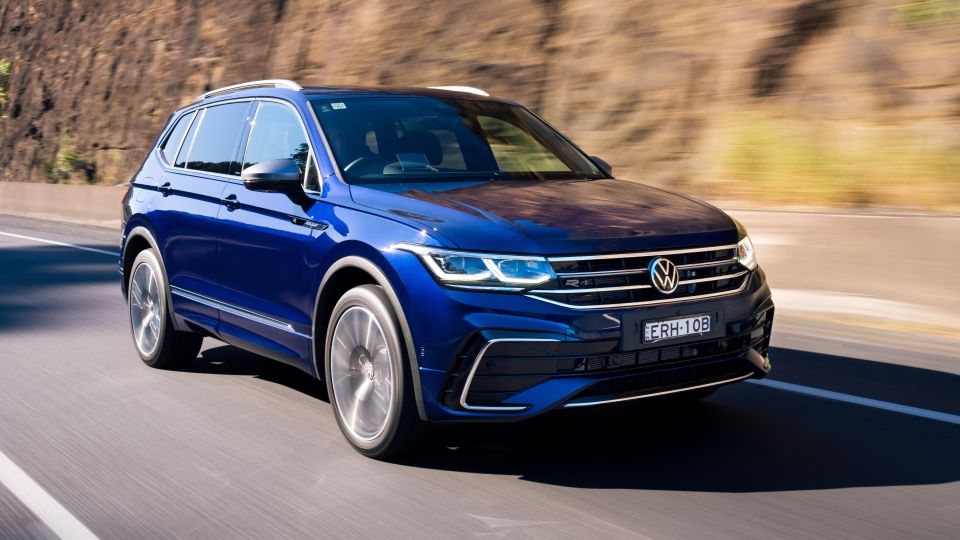


Quickly see how this car stacks up against its competition. Select any benchmark to see more details.
Where expert car reviews meet expert car buying – CarExpert gives you trusted advice, personalised service and real savings on your next new car.
Volkswagen is one of those brands that sells a large three-row crossover in markets like North America and China, but not in Australia.
The Volkswagen Atlas battles the likes of the Ford Explorer, Honda Pilot and Subaru Ascent, three other models also off-limits to Australians.
Locally, we have the flagship Touareg which offers the diesel grunt local buyers covet, and a classier look and feel than the Atlas. But, alas, there’s no third row available unlike its platform sibling the Audi Q7.
That leaves the Volkswagen Tiguan Allspace, a stretched version of the Tiguan that measures 192mm longer than its two-row counterpart on a 109mm longer wheelbase, to pick up the seven-seater slack.

Hailing from Volkswagen’s Puebla, Mexico plant, which seems to be suffering fewer supply chain disruptions than the regular Tiguan’s German Wolfsburg plant, the Tiguan Allspace is classified in the monthly VFACTS industry sales report as a Large SUV.
But while it’s a stretched version of the regular Tiguan, it’s not a purpose-built large SUV like a Toyota Kluger. Sized similarly to its Skoda Kodiaq platform mate, its most direct conceptual rival is the Mazda CX-8, a stretched CX-5.
Volkswagen counts among the Tiguan Allspace’s rivals the CX-8, Kluger, Hyundai Santa Fe and Kia Sorento. But it leaves off the Mitsubishi Outlander, which is actually 9mm longer and 32mm wider.
First launched globally in 2017 and locally in August 2018, the Allspace accounts for 55 per cent of global Tiguan production. To date, Volkswagen Australia has sold around 15,000 units, accounting for around 41 per cent of local Tiguan sales.
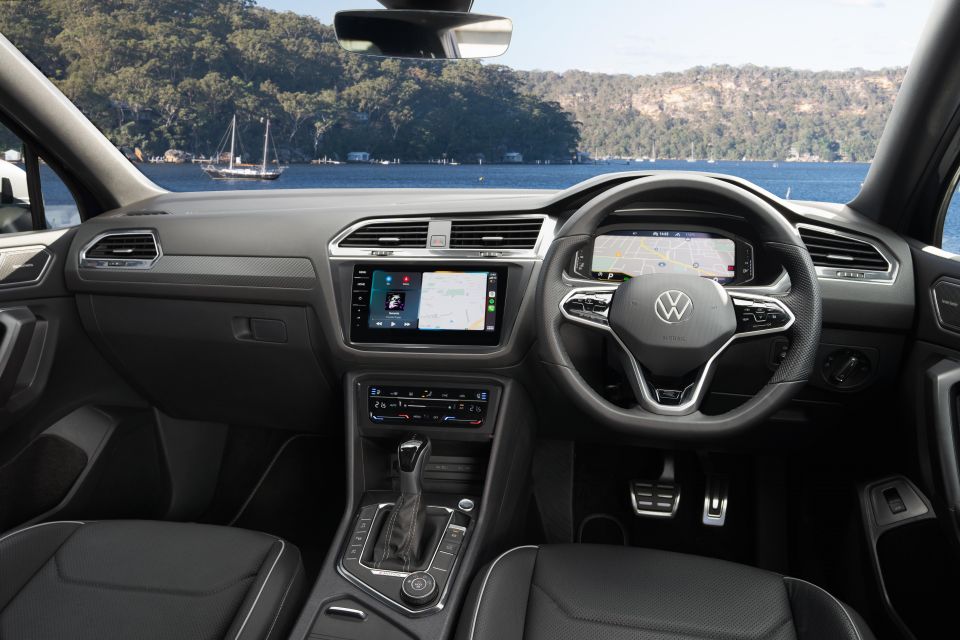
For 2022, it’s received a mid-life refresh. That’s brought with it tweaked styling inside and out, the latest suite of IQ.Drive driver assistance features, and the latest generation of infotainment system.
A 10.25-inch digital instrument cluster is now standard across the range, while Matrix LED headlights and ventilated front seats are now available – the latter is something not available on the regular Tiguan.
It’s still not quite as handsome as its Skoda Kodiaq cousin, and there’s something about the proportions that seems slightly off. Mind you, if you had never seen the regular-length Tiguan that thought probably wouldn’t cross your mind, and the facelift has definitely improved the looks.
With a wide range of variants and a choice of four different engines, including a turbo-diesel, the Tiguan Allspace seems to have something for everyone.

2022 Volkswagen Tiguan Allspace pricing:
All prices exclude on-road costs and any credits for deleted features – more on that later
Compared with the equivalent two-row Tiguan, you’re paying between $1900 and $2500 more for the Allspace.
Options include:
All metallic paint finishes are $900 except Kings Red, which costs $1100. Sadly, this lustrous red isn’t available on sporty-looking R-Line models.
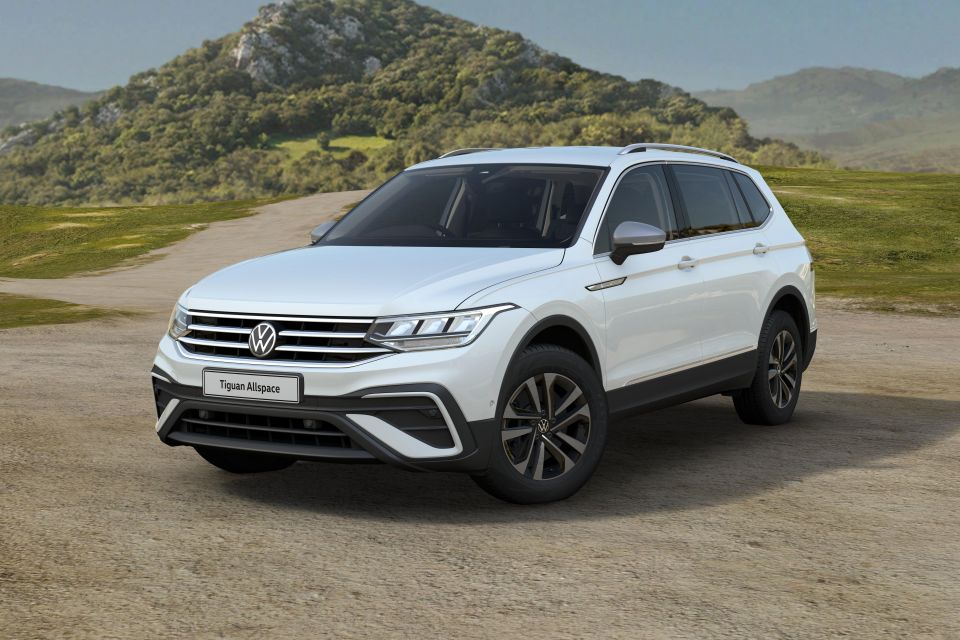
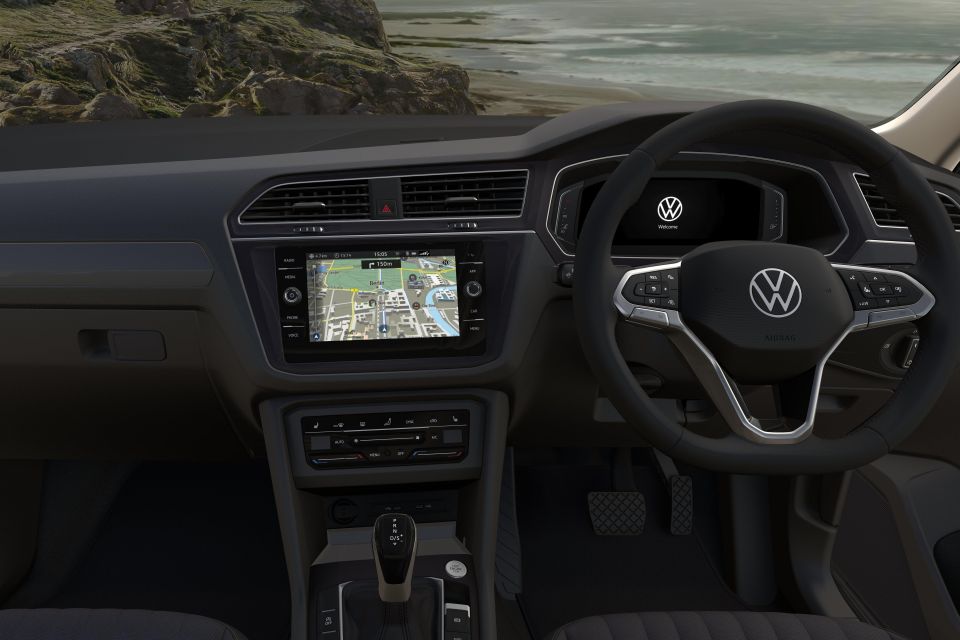
A special edition Adventure will join the line in August, featuring the 162TSI powertrain but without a third row of seating. It’s priced from $51,990 before on-road costs.
Key rivals include:
All prices exclude on-road costs
There’s also the Skoda Kodiaq, which only offers the 132TSI powertrain unless you stump for the $74,990 drive-away RS. The Kodiaq Style is $52,990 drive-away, while the Sportline is $57,990 drive-away.

Buy your new car without the stress. It's fast, simple and completely free.

Great service from Travis and team, second time I have used this business would not hesitate to recommend them to anyone
Craig C.
Purchased a Ford Ranger in Sunshine Coast, QLD
CarExpert helped Craig save $7,224 on his Ford Ranger, now let us save you on your next new car.
Get your BEST priceThe Tiguan Allspace’s interior has received a light sprucing up, but it’s still essentially the same functional, rather austere cabin.
It’s nicely laid out, with the centre stack angled towards the driver and the infotainment system mounted nice and high without looking like a tablet-style afterthought. It mightn’t be a glitzy cabin, but it should age well.
The updated model borrows the new touch-capacitive climate control array from the corporate parts bin but, while it looks more modern than the old controls, there’s no improvement in usability.
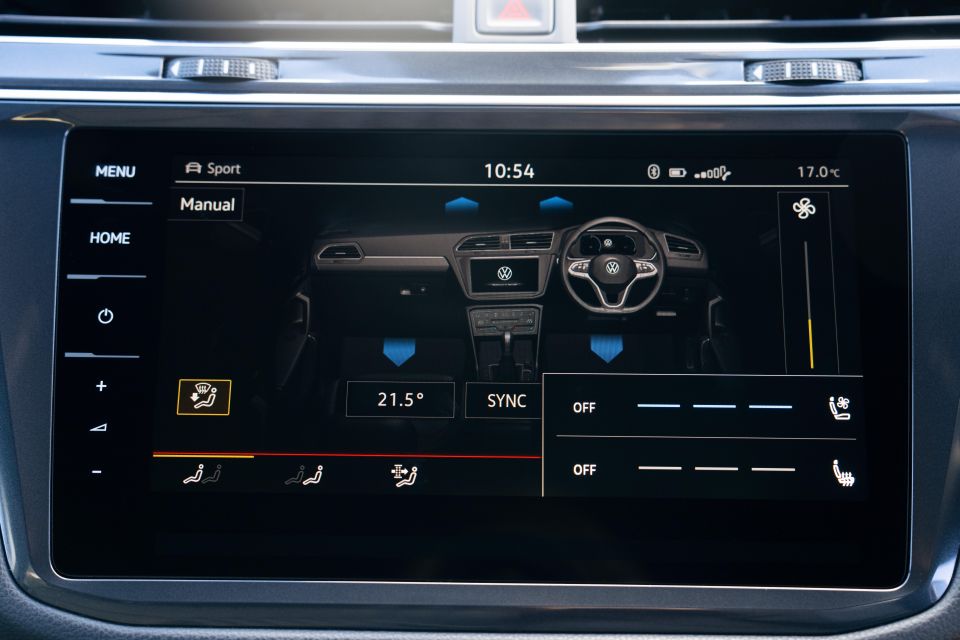
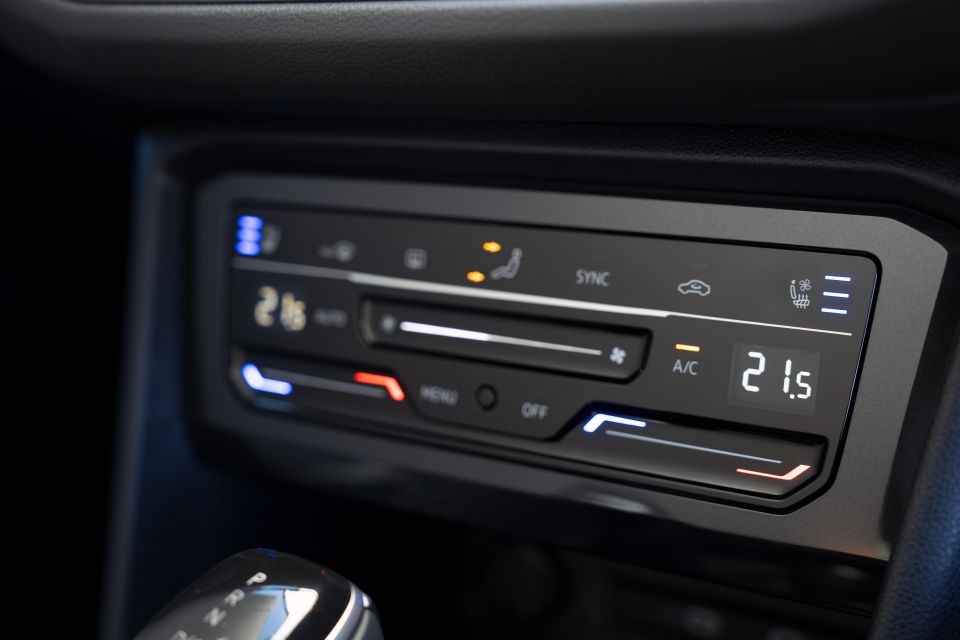
Ditching knobs for touch sliders without any haptic feedback is frankly a step backwards, though it’s not the most annoying thing Volkswagen has done in the world of interior design in the past few years. There are, mercifully, still conventional buttons and switches to be found elsewhere in the cabin, so the Tiguan has avoided the excesses of the Mk8 Golf.
Volkswagen has also thankfully avoided the scourge of piano black trim in the Tiguan’s interior. Instead, the climate controls and touchscreen are surrounded by this glossy grey trim that’s inoffensive and much less likely to show scratches and smudges.
Each trim level has a different type of trim insert on the dash and doors: striped metal-look trim in the Life, shiny wood-look trim in the Elegance, and carbon-fibre-esque trim in the R-Line.
The 9.2-inch screen on Elegance and R-Line models is only slightly bigger than the 8.0-inch unit in the Life, and the shortcut buttons found on the right-hand side of the smaller screen can’t be found on the 9.2-inch unit.
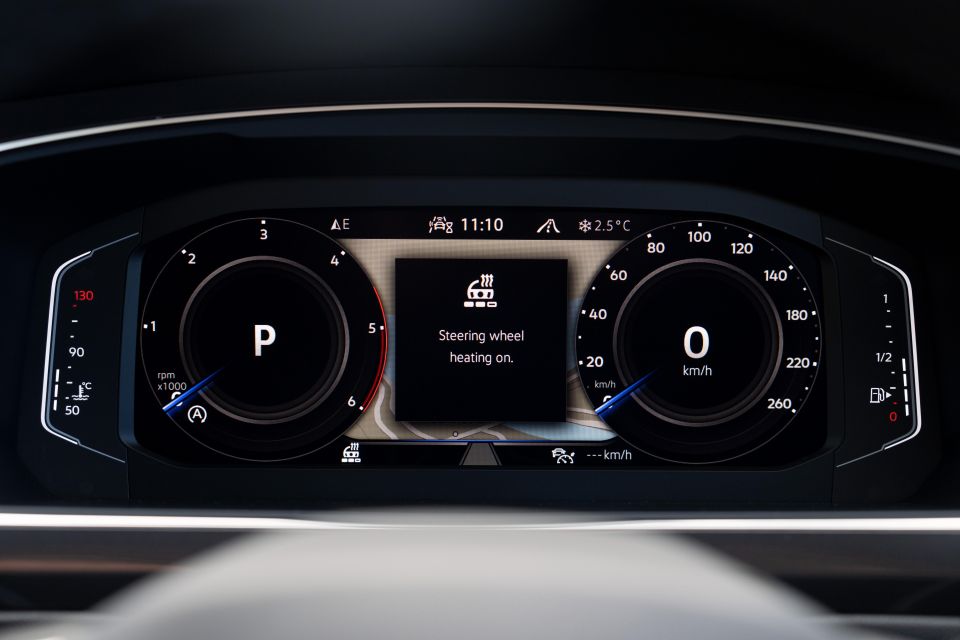
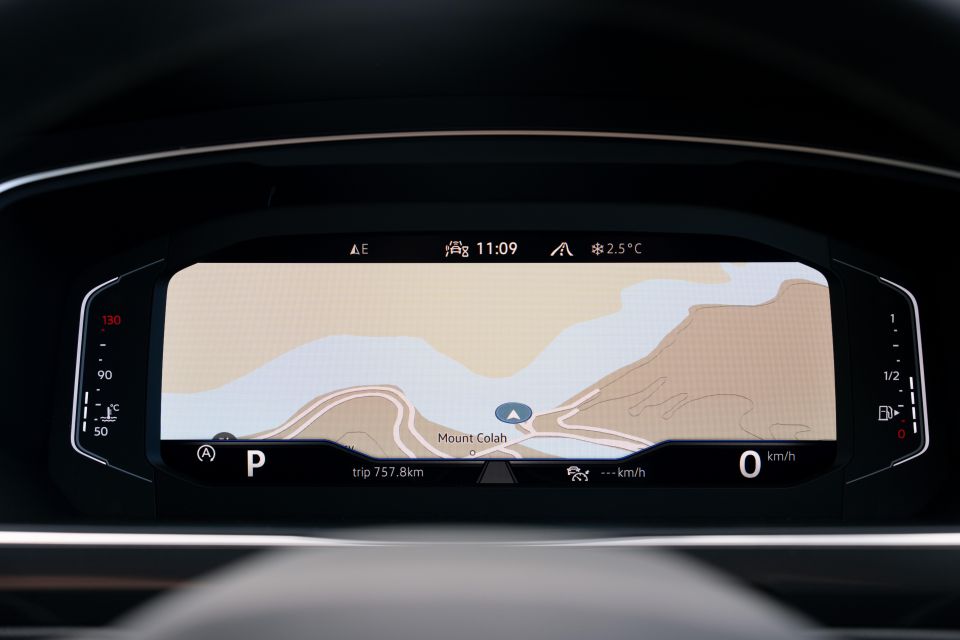
Both systems feature essentially the same range of features, including wireless Android Auto and Apple CarPlay, DAB+ digital radio and gesture control. The larger Discover Pro unit features a configurable home screen.
For the most part, Volkswagen’s infotainment systems are hard to fault with a modern look, legible graphics and a generally logical layout.
The Digital Cockpit Pro is also among the best digital instrument clusters in the segment, being modern-looking, easy to configure, and offering the option to view maps.
While the base Life’s screen isn’t much of a step down from up-spec models, its cloth upholstery is rather dreary if seemingly hard-wearing.
I don’t usually find myself gravitating towards sportier-looking variants in a model range, but the R-Line adds not only a sharper exterior appearance but also some appealing touches inside.
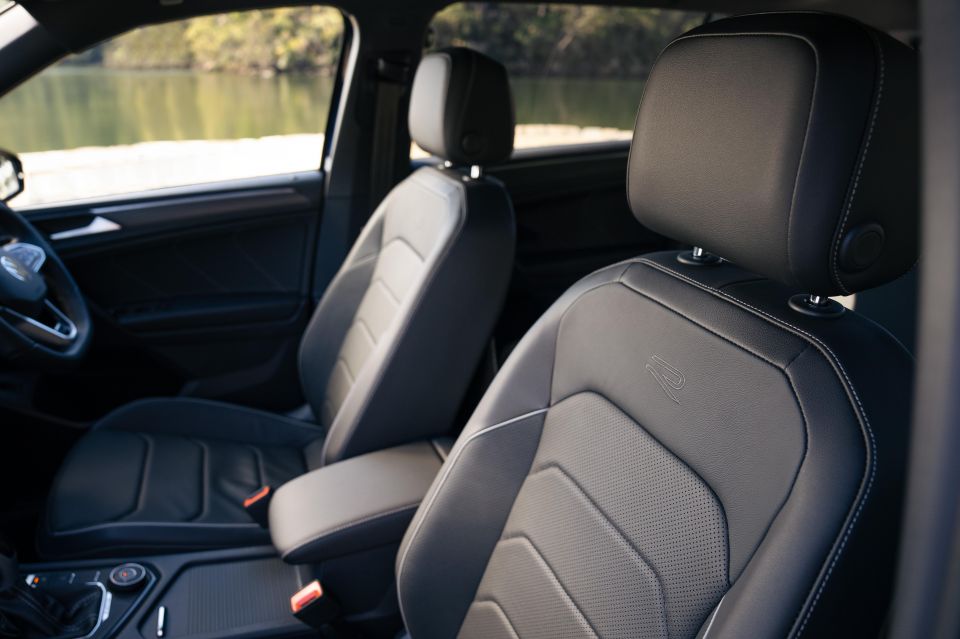
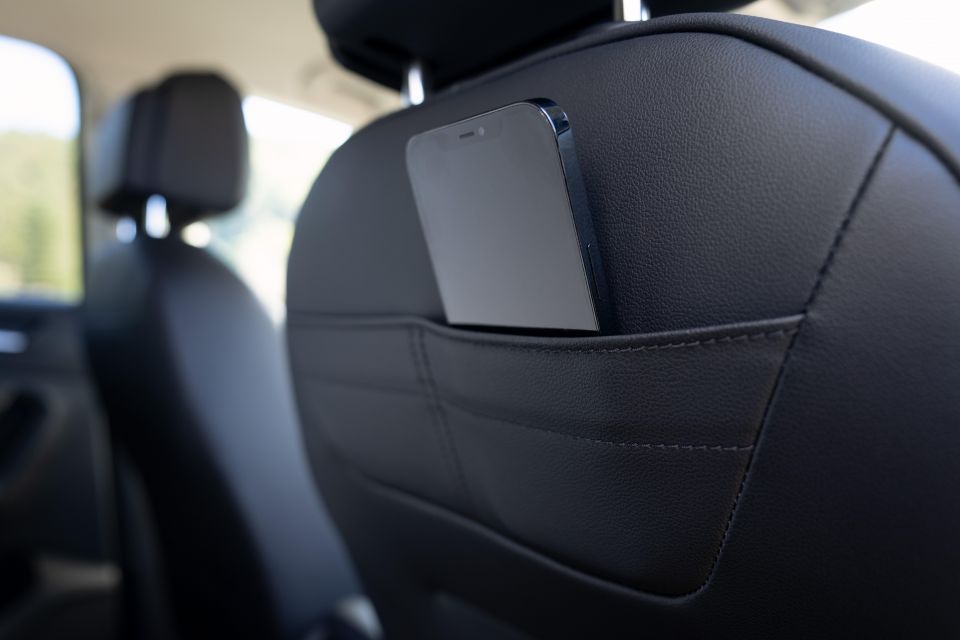
The front seats have thicker bolstering, the metal pedals add some contrast in the black-on-black cabin, and the steering wheel has tactile perforated leather. What a pity the new Storm Grey interior colourway is only available on Life and Elegance models.
Said models also avoid the frustrating gloss black touch controls found on the R-Line’s wheel. Their steering wheel is just as chunky, if lacking the cool perforated leather trim, but uses conventional buttons that are eminently more tactile. The R-Line’s buttons simply feel odd to operate.
Material quality is quite good across the range. While we’d like to see some soft-touch trim on either side of the centre console, the dash top is finished in particularly soft trim and soft-touch plastic is used for the front door tops (though not the rear door tops).
In Volkswagen tradition, the bottle holders in the doors – which can accommodate a 1L bottle – are also finished with felt trim.
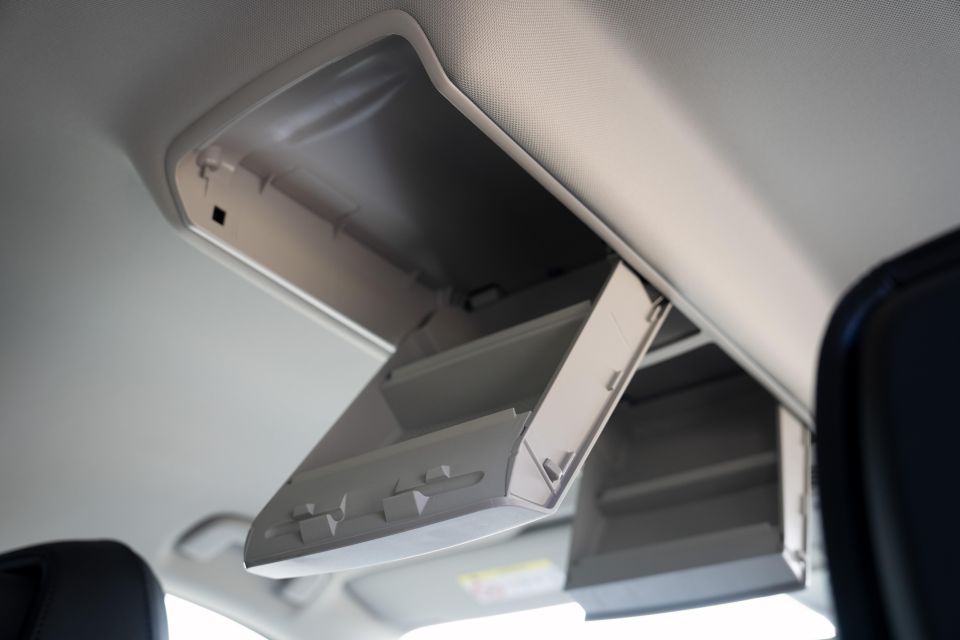
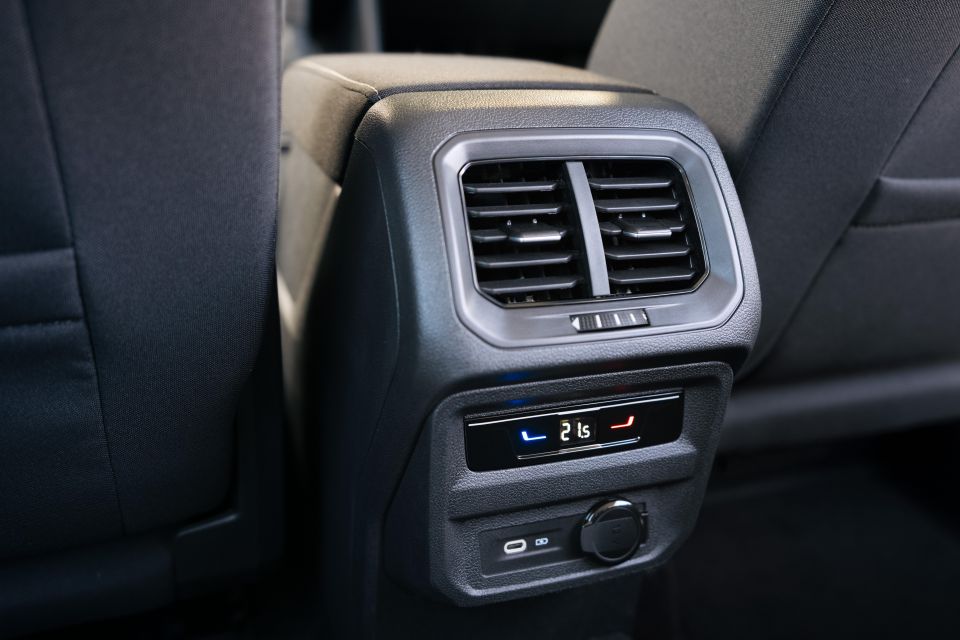
Also in Volkswagen tradition is the centre console bin, which features a height-adjustable arm rest. It’s so clever and easy to use while also feeling substantial, and it makes you wonder why other brands don’t offer it too.
If you’re looking for neat touches like little waste bins and umbrellas in the doors, however, you’ll need to go to a Skoda dealer.
The second row is comfortable, and the seats split and fold 40:20:40. You can recline the backrest, and there’s a centre armrest with two cupholders. There’s a USB-C outlet back here, plus air vents and controls for the third climate zone.
Second-row occupants can also access a pair of overhead storage compartments that tilt down from the ceiling on models without the panoramic sunroof. We’re not quite sure what you’d put in them short of sunglasses, but we can never complain about having too much storage.
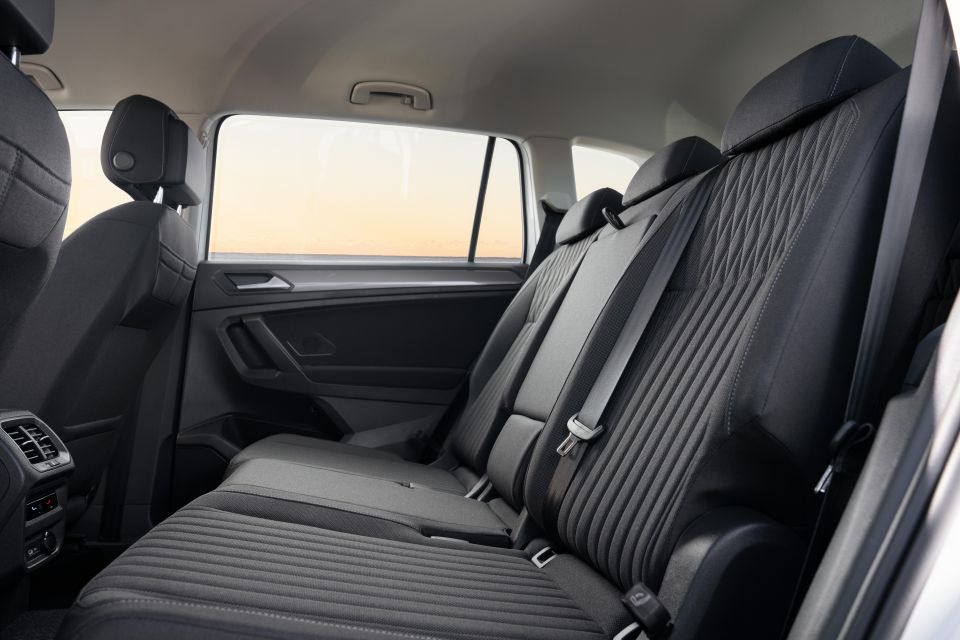
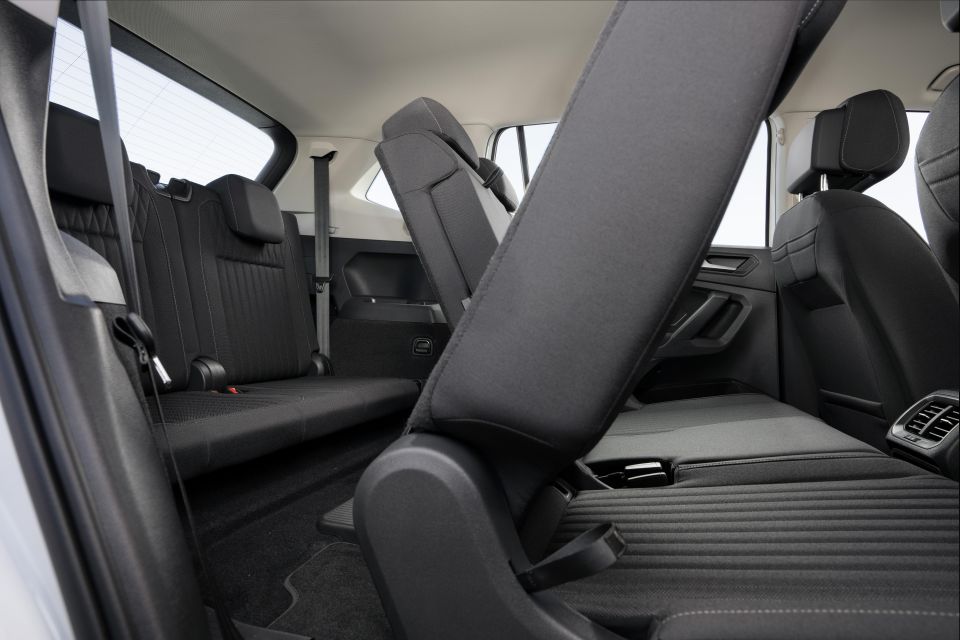
You can’t fit three abreast as comfortably as in a Kluger or Santa Fe, however – not surprising, given the Kluger is around 100mm wider and a Santa Fe is around 60mm wider.
There’s a raised driveline tunnel that’s fairly tall, though it’s relatively narrow and therefore doesn’t impinge too much on the centre seat occupant’s leg room. Child seats can be fitted using one of the three top-tether or two ISOFIX anchor points.
The Tiguan Allspace’s third row is for children only. Even with the second row seats pushed forward, severely restricting said occupant’s legroom, I struggled to fit comfortably after awkwardly clambering back there.
I’m 180cm tall, and I found it considerably less comfortable than a Santa Fe or Sorento’s third row and about on par with the Kodiaq. Toe room, knee room, head room – you name it, it’s tight. There’s also nothing in the way of amenities back here beyond a couple of cupholders, and there are no child seat anchor points.
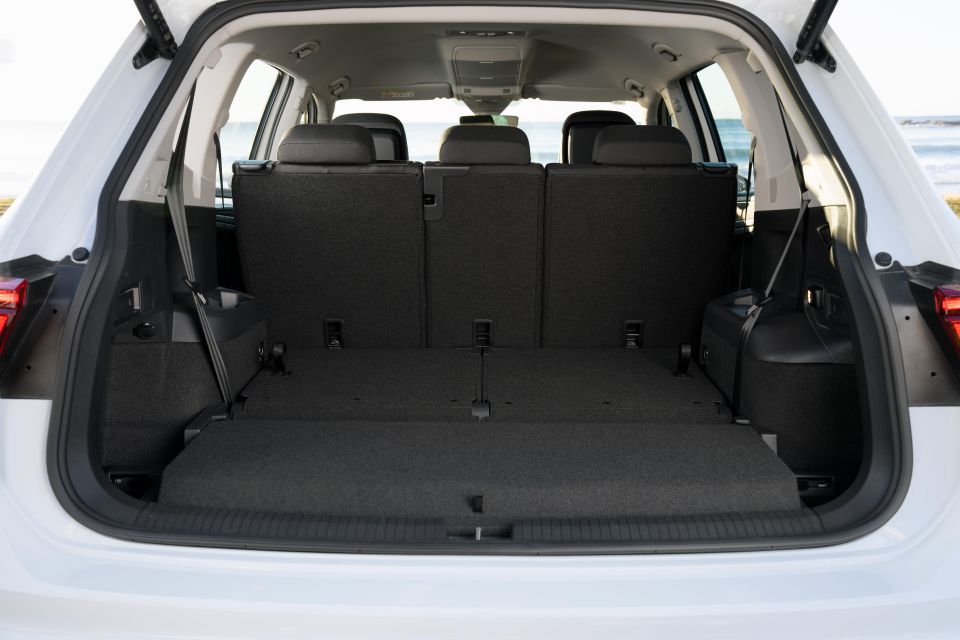
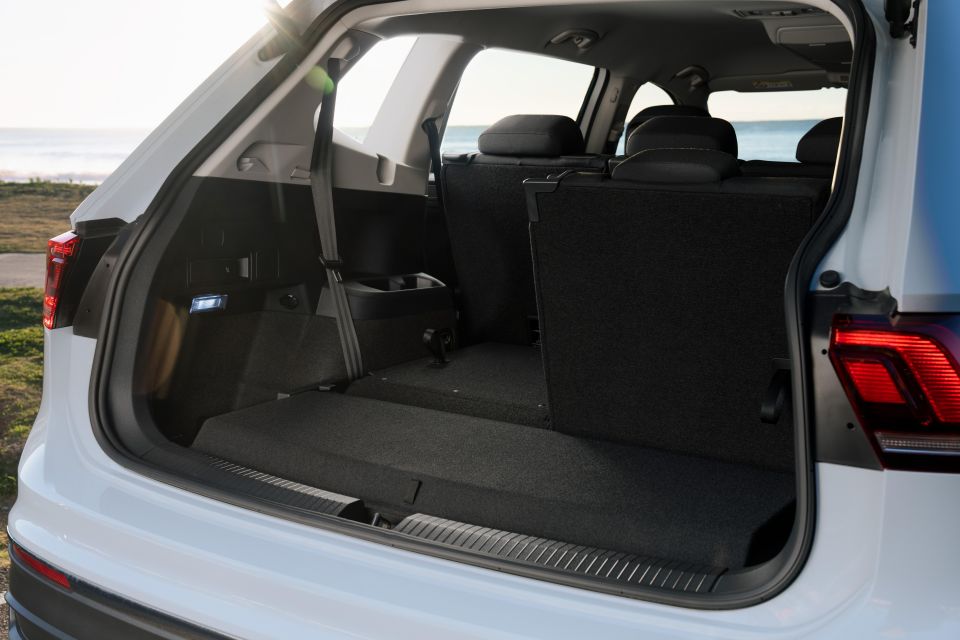
While the third rows of models like the Kluger are hardly palatial, the Tiguan Allspace is clearly a size smaller than other models in the Large SUV segment. It’s more comfortable, though, than something like a Honda CR-V.
Volkswagen says there’s 230L of luggage space with all three rows up. This increases to 700L with the second row dropped and 1775L with the second and third rows folded.
That’s in the same ballpark as the likes of the Kodiaq and CX-8, which means you’d be lucky to fit a single large suitcase with all three rows up. But even larger vehicles like the Kluger and Santa Fe are in the same boat when it comes to luggage space with a full complement of passengers.
The cargo cover is neatly stowed in a compartment under the boot floor. All models feature a space-saver spare.
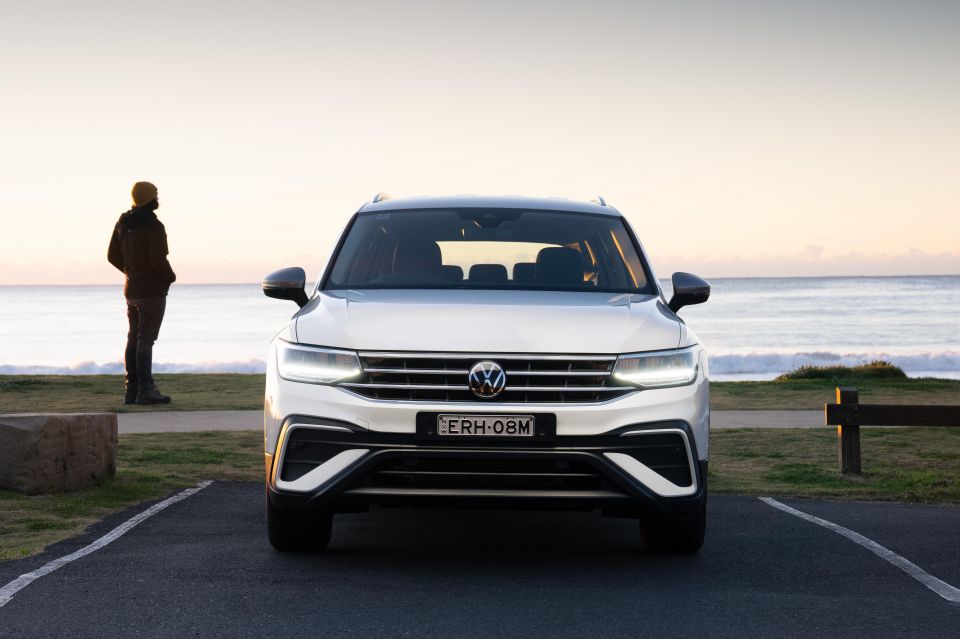
The base 110TSI uses a turbocharged 1.4-litre four-cylinder engine producing 110kW of power (@5000-6000rpm) and 250Nm of torque (@1500-3500rpm). It’s mated with a six-speed dual-clutch automatic transmission and front-wheel drive.
The rest of the range features all-wheel drive, a seven-speed dual-clutch auto and a turbocharged 2.0-litre four-cylinder engine.
There’s the lone diesel, the 147TDI, which produces 147kW of power (@3600-4100rpm) and 400Nm of torque (@1750-3500rpm).
The 132TSI and 162TSI petrols produce 132kW (@4387-6000rpm) and 320Nm (@1500-4387rpm) and 162kW (@4300-6200rpm) and 350Nm (@1600-4200rpm), respectively.

Where expert car reviews meet expert car buying – CarExpert gives you trusted advice, personalised service and real savings on your next new car.
Volkswagen claims a 0-100km/h time of 9.5 seconds for the 110TSI, 8.2 seconds for the 132TSI, 6.8 seconds for the 162TSI, and 7.8 seconds for the 147TDI.
110TSI models have a claimed combined cycle fuel consumption of 7.7L/100km, while the 147TDI uses 6.2L/100km and the 162TSI uses 8.6L/100km. The 132TSI is the thirstiest at 8.9L/100km.
We averaged 7.4L/100km in the 110TSI, 7.1L/100km in the 147TDI and 7.9L/100km in the 162TSI, though these weren’t over identical drive routes.
All models have a 60L fuel tank, and all petrol models require 95 RON premium unleaded fuel.
Unbraked towing capacity is 750kg across the range, while braked towing capacity is 2500kg on all-wheel drive models and 1800kg on the 110TSI.
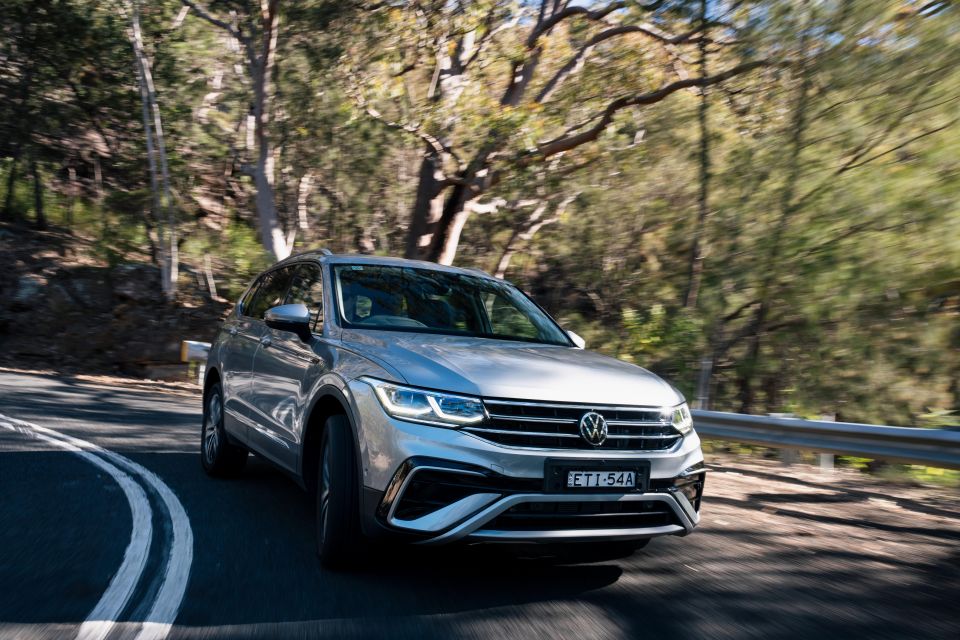
Volkswagen had all powertrains bar the 132TSI on hand at the launch, and I was able to drive the 110TSI Life, 147TDI Elegance and 162TSI R-Line, in that order, back-to-back.
The drive program took us through the suburbs of Sydney’s Lower North Shore, and then up to the southern part of the Central Coast. A mix of fairly slow-going urban roads with a highway or two thrown in felt fairly representative of the Tiguan Allspace’s typical commutes.
Starting with the 110TSI, it’s nice to see a turbocharged four-cylinder engine in a base three-row SUV instead of an uninspiring atmo four (Outlander, CX-8) or a thirsty V6 (Sorento, Santa Fe).
It’s got a bit of character to it too. The four-cylinder has a bit of a snarl to its engine note, while there’s a bit of vibration underfoot. There’s some hesitation off the line but then the turbo kicks in, with peak torque available from just 1500rpm. It’s not quick, with a claimed 0-100km/h time of 9.5 seconds, but it generally feels flexible.
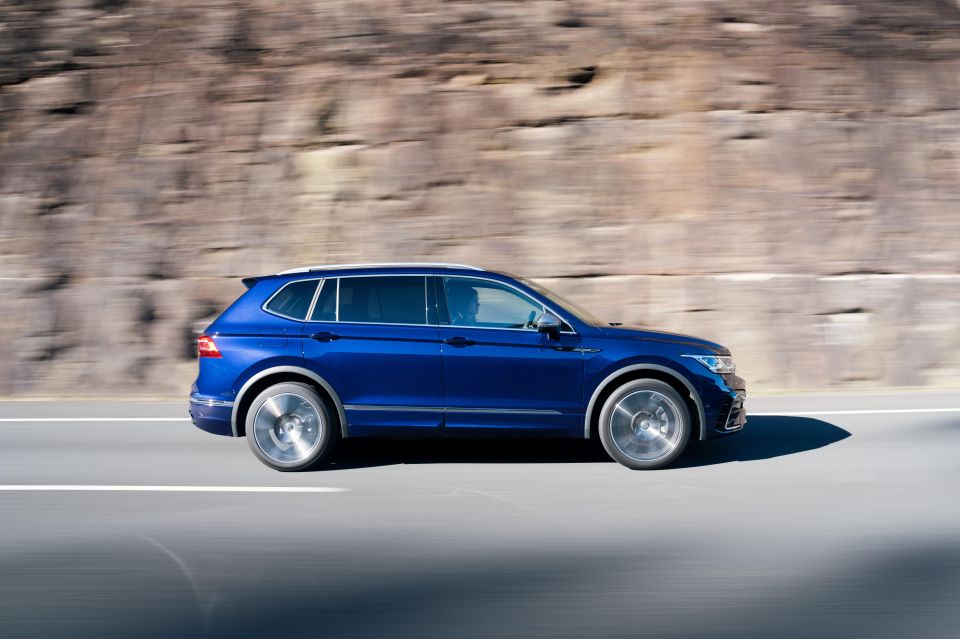
The 147TDI has a bit of diesel clatter under acceleration but it’s fairly quiet at idle, though the Santa Fe and Sorento diesels arguably have the edge in refinement. It’s a good engine, with plenty of low- and mid-range pull.
Volkswagen says the diesel is the preferred choice of those who tow, and is expected to account for only around 10 per cent of Allspace sales. Considering its superior fuel efficiency and excellent mid-range grunt, that figure seems surprisingly low.
While it’s sad there’s no Allspace R, the 162TSI feels nice and punchy. But its 0-100km/h time is only a second quicker than the 147TDI, which is a much more efficient engine – looking at urban fuel economy, the diesel is 30 per cent more efficient.
It has a much more engaging engine sound than the generic diesel soundtrack of the 147TDI, however, and it’s more efficient than the 132TSI.
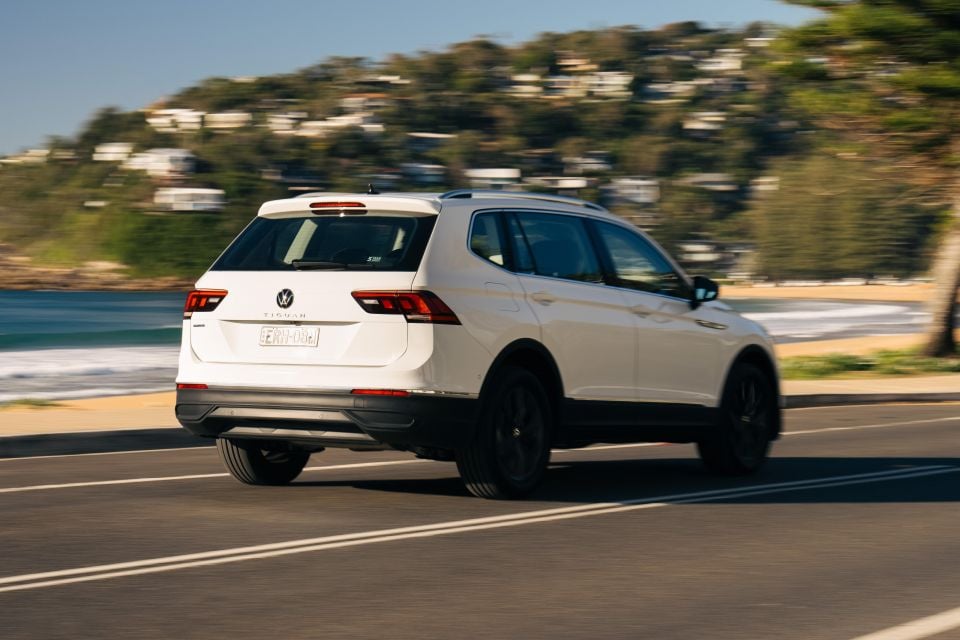
You might expect the Life, with its smaller 18-inch wheels and higher-profile tyres, to ride noticeably better than the Elegance and R-Line with their 19- and 20-inch tyres, respectively. That’s not the case.
The Life still has a firm suspension tune, as many of the patchwork streets of Sydney revealed. It would sometimes thump over roads with lots of sealed cracks, though generally it had a nicely damped feel over road imperfections.
Stepping up to the 147TDI and 162TSI, the difference between Comfort and Normal drive modes with the adaptive suspension is subtle and it doesn’t turn the Allspace into a magic carpet. But in either mode, the ride is firm without being unyielding, even in the R-Line with its 20-inch alloys, and it’s scarcely worse than Allspace models with passive suspension.
Sport mode noticeably firms up the suspension and holds onto gears for longer, and is arguably best kept for a blast through the mountains.
Though our test route featured more highways than mountain roads, we know from experience the Tiguan has nicely balanced handling.
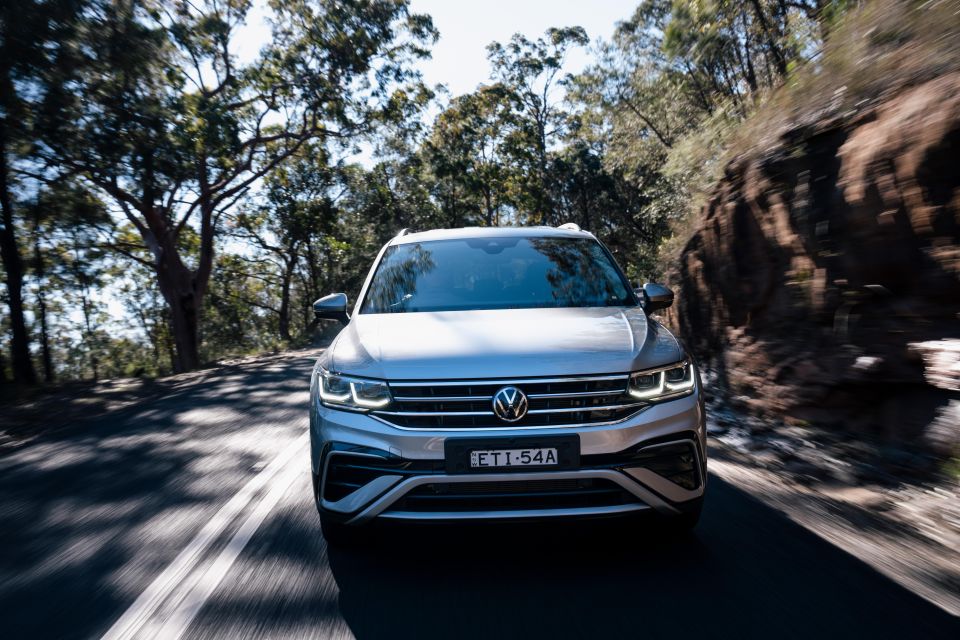
In all models, the steering has a nice weighting to it, with a progressive feel around corners albeit without feeling Golf GTI direct.
Given the Allspace has quite a firm ride, though, perhaps Volkswagen should have given it a bit more steering feel to lean into the sporty angle.
All models suppress wind and road noise quite well, even on coarser-chip roads and at highway speeds.
Highway driving is also made easy with Travel Assist, standard across the range. This combines adaptive cruise control with stop/go, plus a lane centering function.
The lane centering isn’t quite as deft as the rival Lane Following Assist system in Hyundai and Kia products, which sometimes gives you the feeling the Korean cars could drive themselves. But the adaptive cruise works exceptionally well, bringing the car to a stop and edging you through slow-going traffic; it works at all legal speeds in Australia.
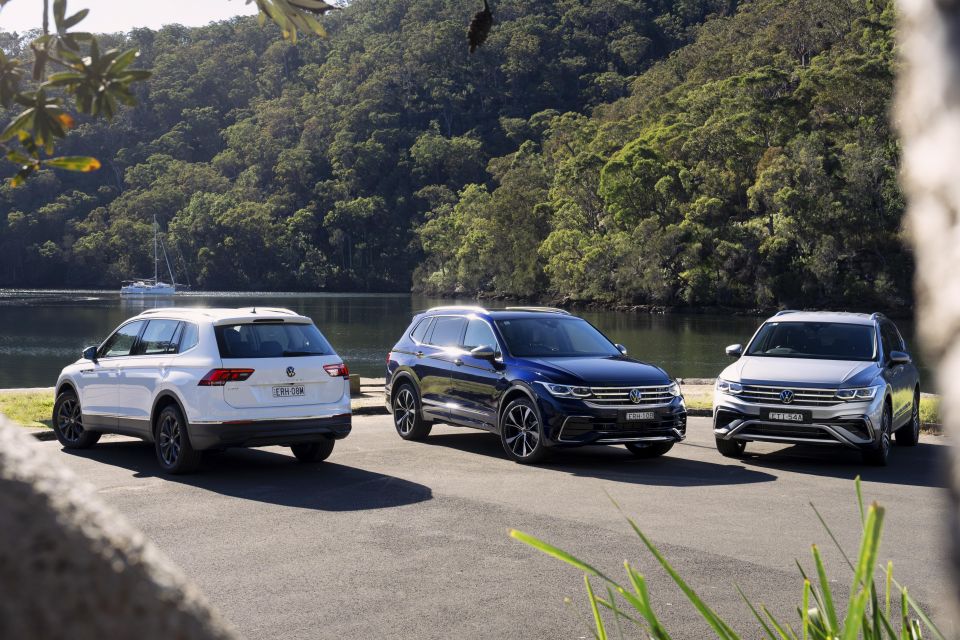
There have been some temporary feature deletions in light of the current semiconductor chip shortages, though the first 4000 vehicles imported are unaffected.
Apart from any already in the country, the Tiguan Allspace range will lose blind-spot monitoring and rear cross-traffic alert for around six months. A power tailgate will also become optional on any models imported after this initial 4000-vehicle run.
Another missing feature is Proactive Occupant Protection, which tightens the seatbelts, closes the windows and shuts the sunroof if it detects an imminent collision.
Volkswagen also opted to remove the ‘premium’ LED tail lights from Elegance models in favour of standard LED lights without dynamic indicators. However, some Elegance models have entered the country with the slicker tail lights.
Customers will receive a credit of between $550 and $1300 if they order a vehicle and it doesn’t include these features. Otherwise, they can wait until these features have been restored.
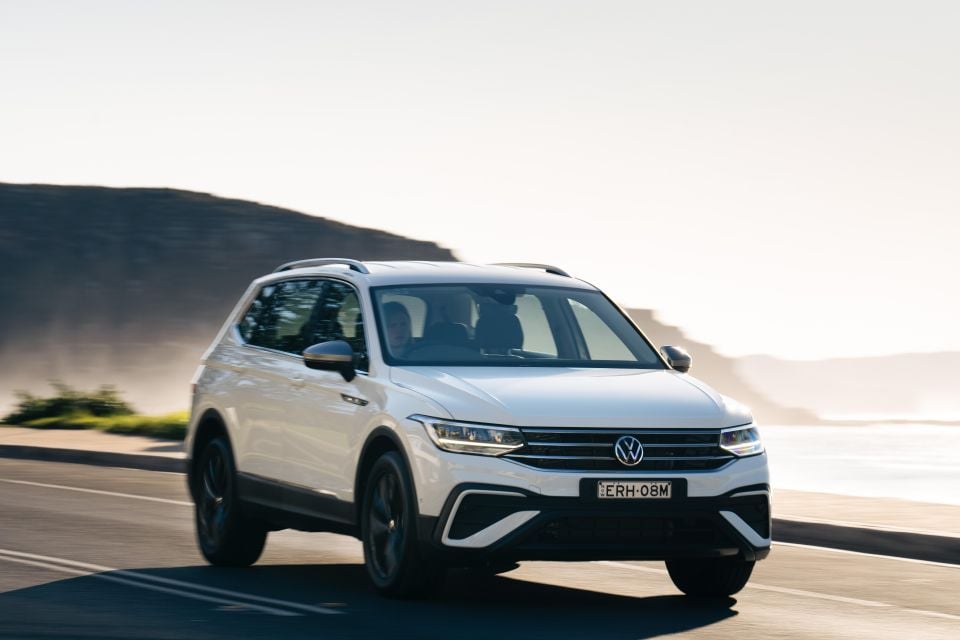
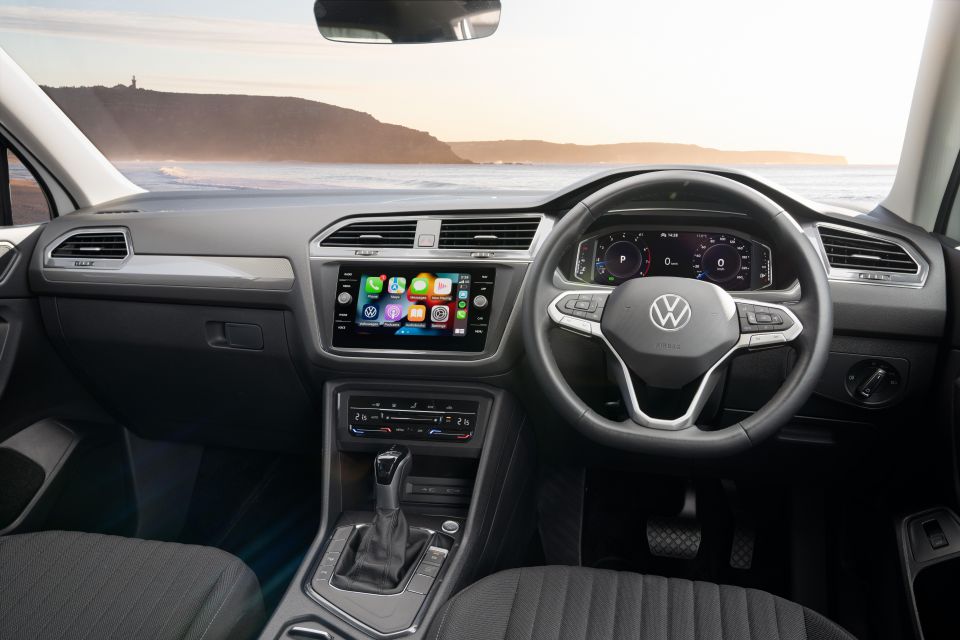
Tiguan Allspace Life highlights:
Standard safety equipment includes:
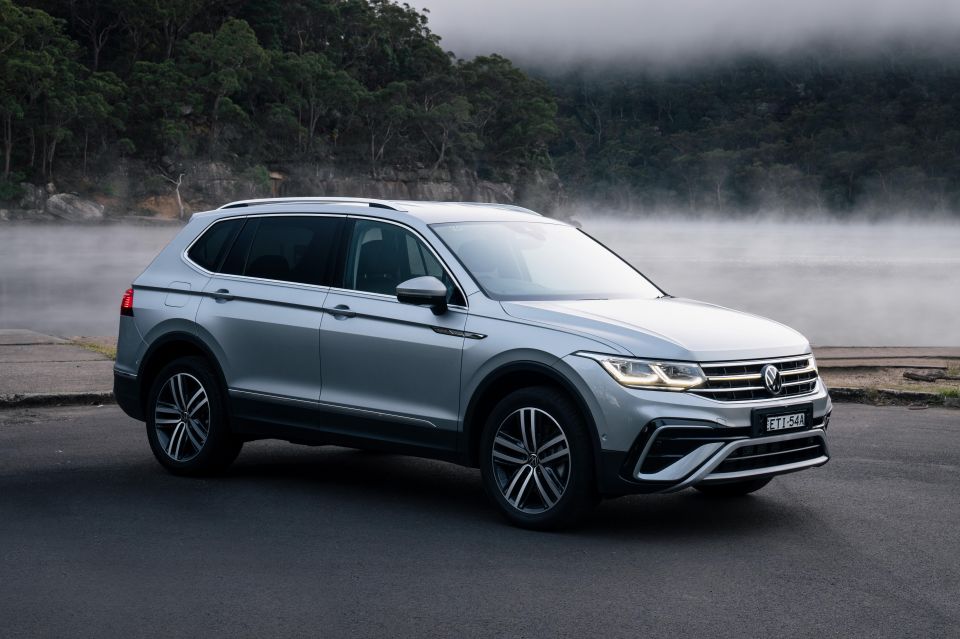
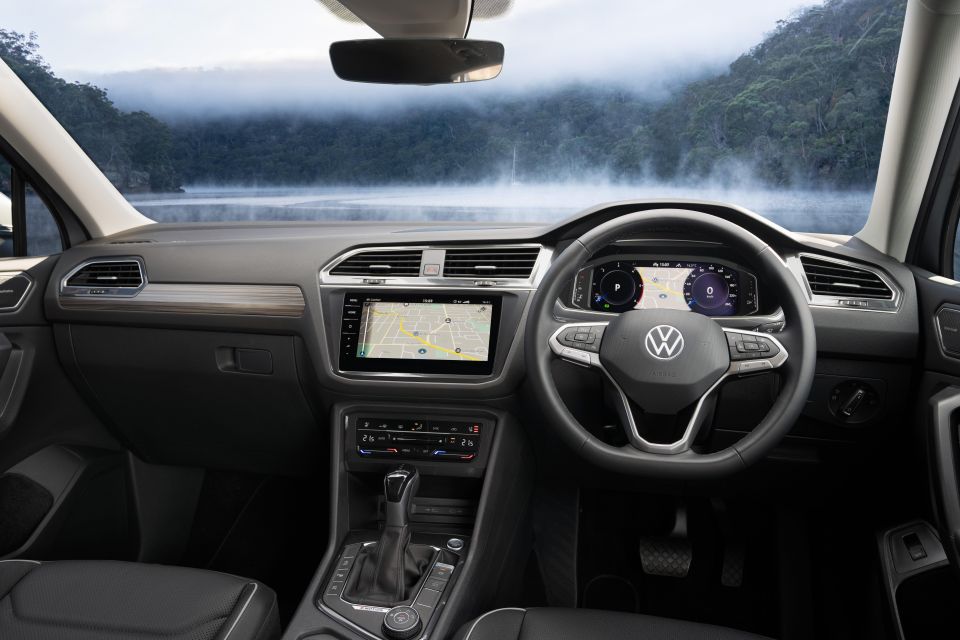
Tiguan Allspace Elegance adds:
Tiguan Allspace R-Line adds:
*An asterisk denotes an item temporarily unavailable due to chip shortages
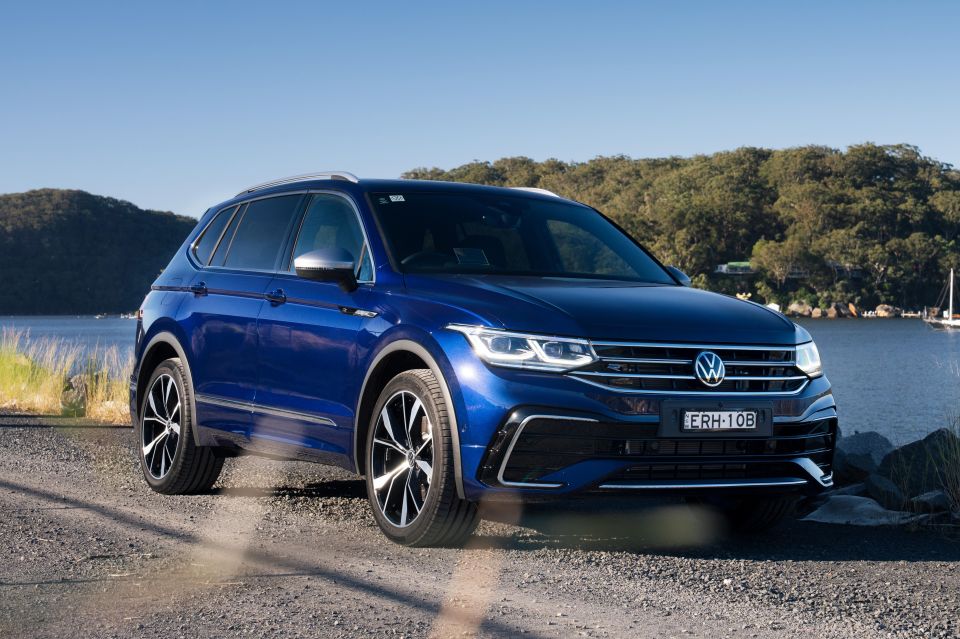

There are two option packages available depending on variant.
The Luxury Package (Life) adds:
The Sound & Vision Package adds:
The IQ.Light headlights also include an all-weather light function which you can use instead of fog lights.
Volkswagen Group Australia has specified the Tiguan Allspace quite differently from the Kodiaq, which no longer offers a diesel and misses out on the 110TSI and 162TSI powertrains.
The Volkswagen brand’s strategy seems ironically cleverer than the Skoda brand’s, with a full suite of active safety and driver assist features as standard, semiconductor chip levels permitting.
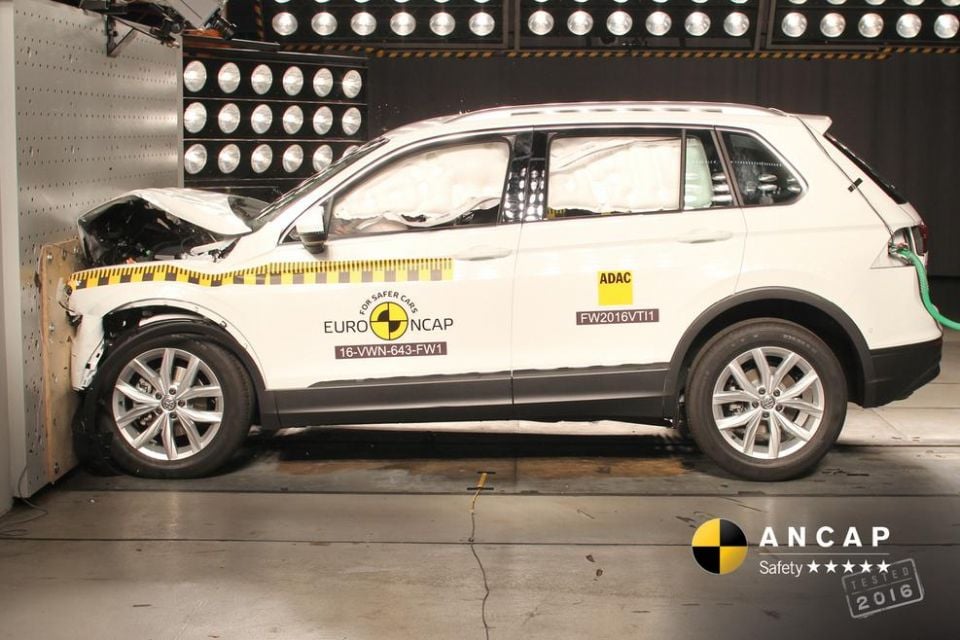
The Volkswagen Tiguan Allspace wears a five-star ANCAP safety rating based on testing carried out in 2016.
The Tiguan scored 96 per cent for adult occupant protection, 80 per cent for child occupant protection, 68 per cent for vulnerable road user protection, and 68 per cent for safety assist.
Standard safety equipment includes:
*An asterisk denotes an item temporarily unavailable due to chip shortages

The Tiguan Allspace is backed by a five-year, unlimited-kilometre warranty.
Volkswagen is offering the Tiguan Allspace with a choice of three- or five-year servicing Care Plans.
The three-year plan costs $1650 on all bar the 110TSI Life, where it costs $1400. Five-year plans cost $2600 on the 110TSI Life, $2750 on 147TDI models and $2950 on all other models. Servicing is required every 12 months or 15,000km, whichever comes first.
A Kodiaq 132TSI’s five-year plan costs considerably less at $1800. The Tiguan Allspace is also more expensive to service over five years than a Santa Fe ($1995-2295), Sorento ($2388-2393) or CX-8 ($1745-1890). A Kluger or Outlander is cheaper still.

Buy your new car without the stress. It's fast, simple and completely free.

Great service from Travis and team, second time I have used this business would not hesitate to recommend them to anyone
Craig C.
Purchased a Ford Ranger in Sunshine Coast, QLD
CarExpert helped Craig save $7,224 on his Ford Ranger, now let us save you on your next new car.
Get your BEST priceThe Volkswagen Tiguan is one of the better mid-sized SUVs, and stretching it to add a third row brought practicality benefits without any appreciable downsides.
But the third row is best saved for occasional use by small children – for example, when you have to shove little Billy to the back row because Nanna is coming along for a ride – and it simply isn’t as comfortable as a Santa Fe or Sorento for larger occupants.
Said models are also priced right up against the Tiguan Allspace, and offer a compelling turbo-diesel powertrain of their own. And if you want a more affordable three-row crossover, Mitsubishi will sell you an Outlander for thousands less than a Tiguan Allspace, and it’ll cost less to service, too.


The Tiguan Allspace has a lot to recommend it for, however.
It has the same poised feel as a regular Tiguan, boasts an impressively wide range of powertrains, and its interior and technology is classic Volkswagen with few of the annoyances of newer models like the Golf.
If you love the Tiguan but want the extra practicality that comes with a third row, the refreshed Allspace remains as compelling an option as ever. But don’t forget to look at similarly-priced three-row crossovers from other brands.
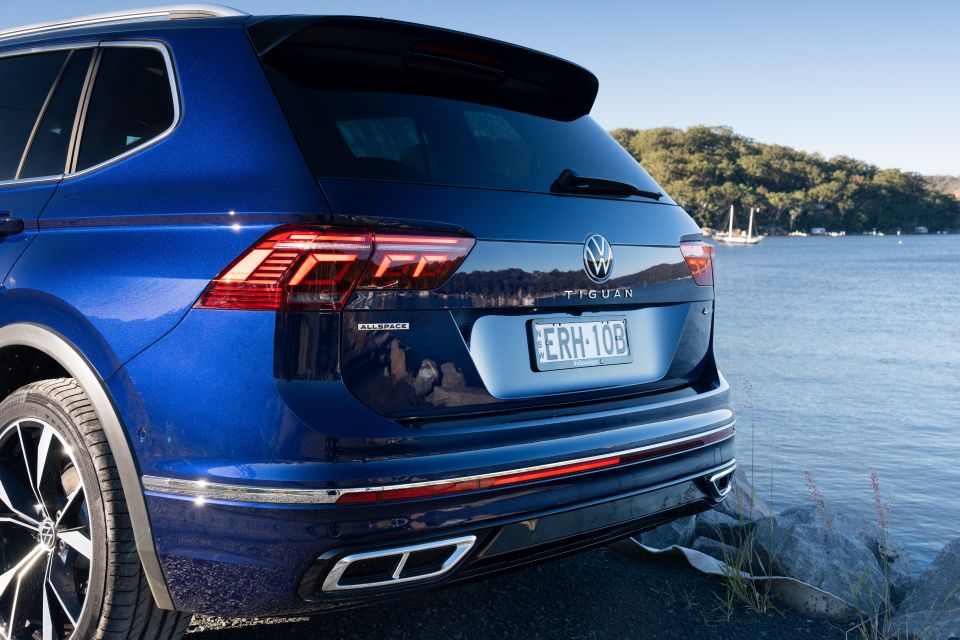
Click the images for the full gallery
Where expert car reviews meet expert car buying – CarExpert gives you trusted advice, personalised service and real savings on your next new car.
William Stopford is an automotive journalist based in Brisbane, Australia. William is a Business/Journalism graduate from the Queensland University of Technology who loves to travel, briefly lived in the US, and has a particular interest in the American car industry.


James Wong
5 Days Ago


James Wong
4 Days Ago


Max Davies
3 Days Ago


Josh Nevett
2 Days Ago


Max Davies
2 Days Ago


Damion Smy
17 Hours Ago